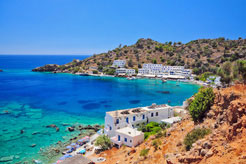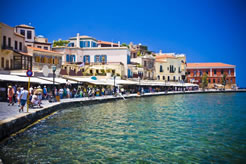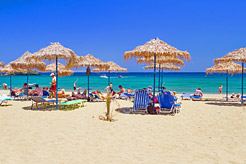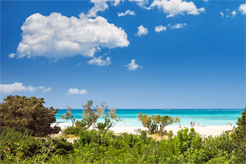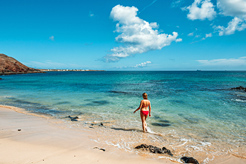- Book online with TUI & save up to 7% on holidays
- FREE child places available for select holidays
- Pay £0 deposits with direct debit & spread the cost
Best time to visit Crete
Crete weather is typically Mediterranean with hot dry summers and plenty of sunshine from the beginning of May to the end of September.
- Best time to visit
- Weather by month
- 5-day weather forecast
- Destinations
- Travel advice
- Deals & discounts
Crete by month
Jan Feb Mar Apr May Jun Jul Aug Sep Oct Nov Dec
Recommended for Crete
Top Crete destinations
Below are the temperatures expected today at popular destinations in Crete. Select a destination to compare today's forecast with average weather conditions.
All Crete destinations
- Aghia Marina
- Aghia Pelagia
- Aghios Nikolaos
- Agia Galini
- Almyrida
- Amoudara
- Analipsi
- Apokoronas
- Bali
- Elounda
- Fodele
- Galatas
- Georgioupolis
- Gournes
- Gouves
- Heraklion
- Hersonissos
- Horafakia
- Ierapetra
- Istron Bay
- Kalives
- Kalo Chorio
- Kamilari
- Kamisiana
- Khania
- Kokkini Hani
- Kolymbari
- Koutouloufari
- Livadia
- Maleme
- Malia
- Milatos
- Palekastro
- Panormos
- Piskopiano
- Plakias
- Platanias
- Rethymnon
- Sissi
- Sitia
- Stalis
When is the best time to visit Crete?
Max Day Temperature (°C)
- Jan
 14
14 - Feb
 14
14 - Mar
 15
15 - Apr
 19
19 - May
 23
23 - Jun
 27
27 - Jul
 28
28 - Aug
 28
28 - Sep
 25
25 - Oct
 22
22 - Nov
 19
19 - Dec
 15
15
Best time to visit
The weather guide for Crete (Heraklion) shows long term weather averages processed from data supplied by CRU (University of East Anglia) & today's weather forecast provided by meteoblue. Find out more about our data sources.
Metric (°C / mm) | Imperial (°F / inches)
Crete weather overview
It is cooler and cloudier in the other months of the year particularly from the end of October to the beginning of March when most of the annual rainfall occurs.
Crete is the largest of the Greek Islands and also the most southerly holiday destination in Europe. It is well served by flights from the UK with direct connections to up to a dozen UK airports.
Most holiday-makers fly into Iraklion, centrally located in the north of the island or into Khania to the west.
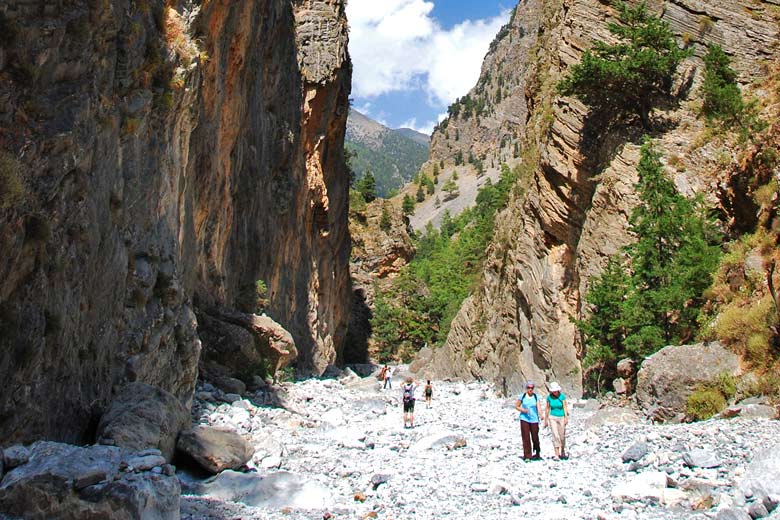
The most dominant geographical feature on Crete is a great spine of mountains that runs more or less the length of the island from west to east.
These mountains which in places rise to over 2,000 metres affect weather conditions considerably and can cause quite large variations in weather between the north and south.
The south and east of the island generally has the best weather with slightly more sunshine and marginally higher temperatures.
However the north of the island has been more extensively developed for tourism than the south, and in summer benefits from the Meltemi winds that blow from the north-west during the hottest months from May to September.
As long as the Meltemi does not blow too strongly it can provide a welcome relief from hot and humid conditions by lowering heat and humidity and to some extent high temperatures as well.
The holiday season in Crete generally begins in May. This is a great time of year for trekking in the mountains or taking part in other outdoor activities that do not involve swimming in the sea because the weather is still relatively cool.
At sea level average temperatures range from 24°C during the day to 17°C at night with 10 hours of sunshine a day; at altitude it is cooler and tends to be cloudier with many of the mountains still capped with winter snow.
Beach holidays to Crete do not really take off until June when average daytime temperatures finally reach the high twenties Celsius and fewer clouds mean that there are usually 12 hours of sunshine a day.
July and August are even warmer, with maximum daytime temperatures reaching into the low thirties Celsius.
This is actually a few degrees lower than Malta or Benidorm at this time of year, and definitely not as hot as Marmaris or Bodrum.
The sea temperature in the middle of June is still usually only 22°C but by the middle of August it rises to 25°C. During the height of summer it is unlikely that there will be any rain.
By September weather conditions in Crete are more like they are in May although the sea is quite a bit warmer and there is more cloud than in May.
By late October the first rains of winter bring some relief from months of summer drought, though it does not become cold until the end of November.
Daytime temperatures still rise into the mid twenties Celsius in October, and usually still touch 20°C in the middle of November.
The months when it rains most are December and January when it can be quite grey at times however there are still sunny days in between.
Even during January and February, the coldest months, temperatures still generally range between 10°C at night to 15°C during the day.
Spring appears towards the end of March when wildflowers start to bloom and the vegetation reaches its peak of greenness after winter rains.
In common with much of the Mediterranean, Crete is susceptible to sirocco winds at any time of year but these occur most frequently between March and the end of May.
A sirocco is a warm to hot southerly wind blowing off the Sahara Desert. The dust that is driven skywards remains in the air and combined with moisture off the Mediterranean Sea produces a foggy sometimes hot blast that is not particularly pleasant.
Siroccos can last for a few hours to a few days, but are not that common.
Though most people travel to Crete at the height of summer, Crete has a lot to offer in all months of the year. Even in the middle of winter it is never very cold by Northern European standards.
For those who like warmth and sunshine and who are not so keen on crowds or basking on the beach, spring and autumn also offer good prospects for some excellent Crete Weather.
What to pack for Crete weather
Light clothes are fine in the summer in Crete, supplemented by slightly warmer attire in the autumn and winter when an umbrella might also prove handy. Outside the summer months, take warm cover-ups against the wind especially if visiting the mountains.
Which is the hottest month in Crete?
The hottest time of year in Heraklion, Crete is normally August. Expect maximum daytime temperatures to reach 28°C with moderate heat and humidity.
Which month has the most rain in Crete?
In terms of rainfall, January is usually the wettest month in Heraklion, Crete with 153mm on average. There are normally 12 days in January with some rain.
When is it sunniest in Crete?
The sunniest time of year in Heraklion, Crete is normally July with bright sunshine on average for 86% of daylight hours; that's 12 hours of sunshine per day.
When is the sea warmest in Crete?
The sea is usually at its warmest in Heraklion, Crete in August when the water temperature reaches 25°C.
Crete travel features
Do you want to learn more about Crete? Read our latest features covering travel tips and insider destination guides on where to go and what to do in Crete.
Be inspired
Get your weekly fix of holiday inspiration from some of the world's best travel writers plus save on your next trip with the latest exclusive offers
We promise not to share your details
Related posts
Popular travel offers
Explore holidays in the sun for less
- Beach holidays
- Family holidays
- City breaks
- Summer holidays
- Winter sun holidays
- Holiday offers
- Top travel brands
- Airlines & flights
- Discount hotels
- Airport parking deals
- TUI
- Jet2holidays
- easyJet holidays
- Love Holidays
- British Airways
Airport parking
- Manchester Airport
- Stansted Airport
- Bristol Airport
- Luton Airport
- Birmingham Airport
- Edinburgh Airport
- Gatwick Airport
- Glasgow Airport
- Newcastle Airport
Airport lounges
- Manchester Airport
- Birmingham Airport
- Bristol Airport
- Edinburgh Airport
- Glasgow Airport
- Heathrow Airport
- Newcastle Airport
- Stansted Airport
- Gatwick Airport











 TUI deal finder
TUI deal finder












